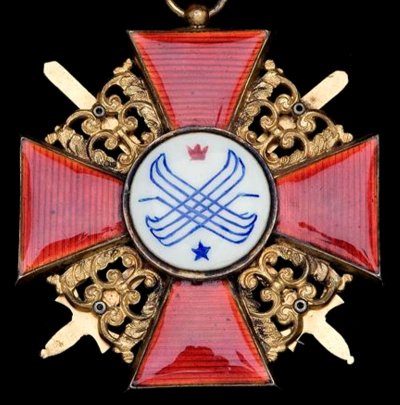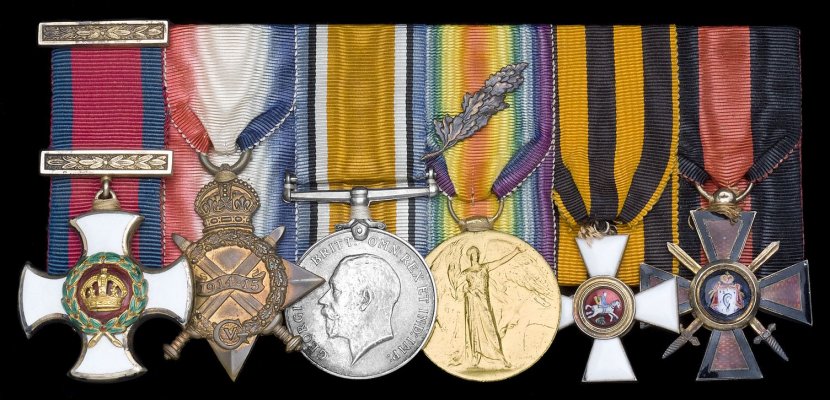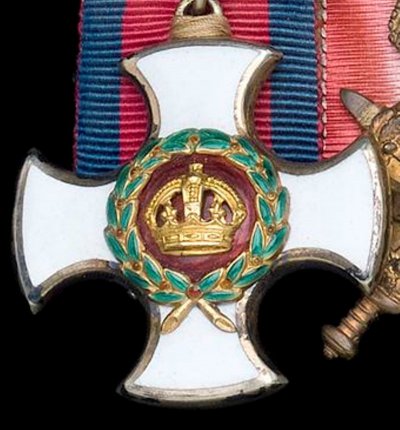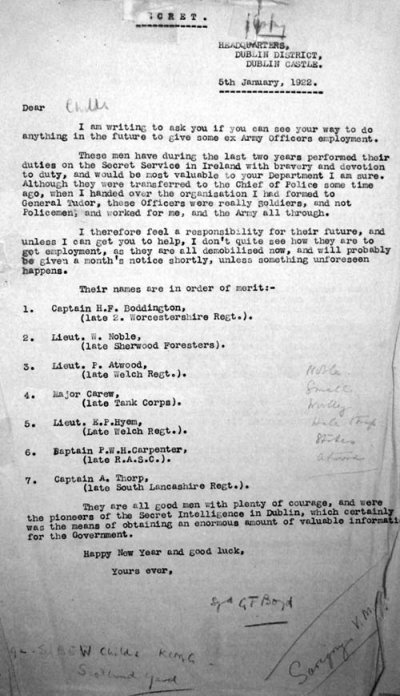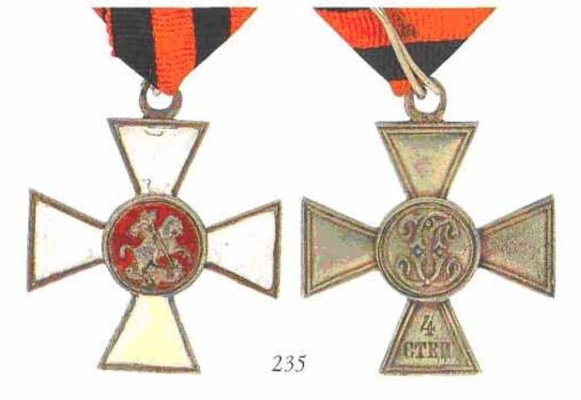Вы используете устаревший браузер. Этот и другие сайты могут отображаться в нём некорректно.
Вам необходимо обновить браузер или попробовать использовать другой.
Вам необходимо обновить браузер или попробовать использовать другой.
Любопытная первая Анна с мечами
- Автор темы JapanX
- Дата начала
Андрей Пустоваров
Супер-Модератор
Продалась в Англии года четыре назад за £1350

прям таки не Анна, а сама Виктория на лужок погулять вышла
Ветеран
Местный
Всегда для меня было секретом: для кого предназначались такие поделки? Ведь любому кавалеру вручали обычный капитульный орден. Куда исчезла вручённая награда, чтобы освободить место такому ордену? И "суррогатных" орденов существует довольно много.
Неужели кавалеры были столь меркантильны, что небольшая разница в стоимости золотого и серебряного орденов гнала их в скупку?
Неужели кавалеры были столь меркантильны, что небольшая разница в стоимости золотого и серебряного орденов гнала их в скупку?
.. поделки...

Неужели так активно не понравилась работа знака?

... для кого предназначались такие поделки?
Один из возможных вариантов - вот для этих Господ
http://saintanna.ru/?lang=rus&id=60
Ветеран
Местный
Вряд ли для этих господ - с мечами...
Да, такие знаки я не очень люблю. Какие-то эти ордена пустые, бессодержательные... без привязки к истории.
Да, такие знаки я не очень люблю. Какие-то эти ордена пустые, бессодержательные... без привязки к истории.
Вряд ли для этих господ - с мечами...
Я говорил не об этом ордене конкретно, а об одном из возможных вариантов ответа на вопрос: "для кого предназначались такие поделки?"

Какие-то эти ордена пустые, бессодержательные... без привязки к истории.
Ну эти знаменитые "аура"/"карма предмета" штуки крайне субъективные.
Что для одного пустышка, то для другого культовый объект почитания.
Уравнение
Карма предмета = "тип субъекта + тип и провенанс объекта"
имеет бесконечное число решений.
Впрочем, некоторые и октябрьскую звездочку в норе своей так намолят, что она по ночам светится

Последнее редактирование модератором:
Igor Ostapenko
Участник АК
Вряд ли для этих господ - с мечами...
Да, такие знаки я не очень люблю. Какие-то эти ордена пустые, бессодержательные... без привязки к истории.
Почему вряд ли ?
Вот например
" Валерий Леонидович МАНИЛОВ (* Тульчин, Винницкая обл., 10.01.1939).
Генерал-полковник. Первый заместитель Начальника Генерального Штаба Вооруженных Сил Российской Федерации (с октября 1996 по 29 июня 2001 г.), член Совета Федерации Федерального Собрания Российской Федерации от Приморского края (29.08.2001 – январь 2004). Впоследствии член Кавалерской Думы Императорского Ордена Св. Анны (16.02.2006,16.02.2008, 16.02.2010).
Награждён орденами «За заслуги перед Отечеством» IV ст., Красной Звезды, «За военные заслуги», «За службу Родине в Вооруженных Силах СССР» III ст.
Кавалер ордена Св. Анны 1-й ст. 4.08.2001 (грамота подписана в Сен-Бриаке, № 1/Ан.-2001).
Впоследствии также кавалер ордена Св. Николая Чудотворца 1-й ст. (18.12.2001), св. Владимира 2-й ст. с мечами (19.12.2011). "
представил себе Красную Звезду и эти ...
Группа принадлежала профессиональному разведчику лейтенанту E. A. Small.
В январе 1919 года к нам он прибыл.
Немного попартизанить
Своего Георгия четвертой степени он получил за то, что во главе группы из 37 партизан проник в тыл большевиков и захватил (в полном составе) штаб бригады вместе с её командиром.
"He, with 37 partisans, gallantly penetrated into the rear of the Bolshevik lines and captured the complete brigade staff, including Brigade Commander, Regimental Commander and 50 prisoners, and took away the breech-block of a 3-inch gun. On 23 June 1919, he penetrated further into the Bolshevik lines, and burnt the Suna Bridge. At Suna Station they surprised the guards, capturing two machine-guns."
В январе 1919 года к нам он прибыл.
Немного попартизанить

Своего Георгия четвертой степени он получил за то, что во главе группы из 37 партизан проник в тыл большевиков и захватил (в полном составе) штаб бригады вместе с её командиром.
"He, with 37 partisans, gallantly penetrated into the rear of the Bolshevik lines and captured the complete brigade staff, including Brigade Commander, Regimental Commander and 50 prisoners, and took away the breech-block of a 3-inch gun. On 23 June 1919, he penetrated further into the Bolshevik lines, and burnt the Suna Bridge. At Suna Station they surprised the guards, capturing two machine-guns."
Вот, что аукцион писал о его группе
An extremely rare Russia 1919 operations D.S.O. group of six awarded to Lieutenant E. A. Small, Military Intelligence Services, late South Staffordshire Regiment, one of just five British Army Officers to be awarded the Russian Order of St. George for gallantry during the Intervention: severely wounded in Gallipoli, he was subsequently employed as an agent in France by Military Intelligence and it is probable that his later work with partisans in Russia fell under the same clandestine umbrella - certainly he was employed as an agent during the Irish Troubles 1920-21
Distinguished Service Order, G.V.R., silver-gilt and enamel; 1914-15 Star (2 Lieut. E. A. Small, S. Staff. R.); British War and Victory Medals, M.I.D. oak leaf (Lieut. E. A. Small); Russia, Order of St. George, 4th Class breast badge, 34 by 34mm., silver-gilt and enamel, unmarked; Russia, Order of St. Vladimir, 4th Class breast badge, with swords, 40 by 40mm., silver-gilt and enamel, unmarked, mounted court-style as worn, minor enamel damage, very fine and better
An extremely rare Russia 1919 operations D.S.O. group of six awarded to Lieutenant E. A. Small, Military Intelligence Services, late South Staffordshire Regiment, one of just five British Army Officers to be awarded the Russian Order of St. George for gallantry during the Intervention: severely wounded in Gallipoli, he was subsequently employed as an agent in France by Military Intelligence and it is probable that his later work with partisans in Russia fell under the same clandestine umbrella - certainly he was employed as an agent during the Irish Troubles 1920-21
Distinguished Service Order, G.V.R., silver-gilt and enamel; 1914-15 Star (2 Lieut. E. A. Small, S. Staff. R.); British War and Victory Medals, M.I.D. oak leaf (Lieut. E. A. Small); Russia, Order of St. George, 4th Class breast badge, 34 by 34mm., silver-gilt and enamel, unmarked; Russia, Order of St. Vladimir, 4th Class breast badge, with swords, 40 by 40mm., silver-gilt and enamel, unmarked, mounted court-style as worn, minor enamel damage, very fine and better
А вот его боевой путь
Edward Alfred Small, who was born in 1885, served as a Constable in the North-West Mounted Police in Canada from October 1903 to February 1906, following which he became a rancher in Alberta.
Making his way to the U.K. on the outbreak of hostilities, he was appointed a 2nd Lieutenant on the General List in January 1915 and joined with the 7th Battalion, South Staffordshire Regiment in Gallipoli in June 1915.
Subsequently wounded by a gunshot to his right knee at Hill 70 on 9 August of the same year - when his Battalion came under murderous shrapnel and rifle fire, every single officer being killed or wounded in the first ten minutes of the action - he was invalided home in the hospital ship Aquitania.
Having then undergone another operation for appendicitis in early 1916, he finally appears to have been cleared for active service in March 1917, and went out to France in the following month, with a new appointment in the Intelligence Corps - his service record reveals that he was subsequently employed as a 3rd Class Agent in the Field and that in November 1918 ‘he proceeded to England to report to Mr. R. Page, M.B.E., M21a, War Office for instructions’.
Duly selected for further intelligence duties, he proceeded to North Russia in January 1919, no doubt as a recruit of Mr. Page at the War Office, for his appointment in the Intelligence Corps was terminated in the same month. Certainly his remarkable achievements in command of partisan groups suggest employment of the clandestine kind and the subsequent award of his D.S.O. was a rare distinction indeed for a Temporary Lieutenant. Rarer still was his appointment to the Order of St. George, to which he also added the 4th Class of the Order of St. Vladimir (both confirmed in Brough’s White Russian Awards).
Returning to the U.K. in October 1919, he was demobilised in the following month, the relevant papers noting that in the event of rejoining in an emergency, he was in possession of ‘special instructions’. Intriguingly, too, a report dealing with Small’s demobilisation states that his name was not to be published in the London Gazette, and that any correspondence regarding him be directed to ‘Room 419’ at the War Office. A further hint at his next form of employment may also be found in his new address - Bray, in Co. Wicklow. For, in early 1920, he was recruited for service in the Combined Intelligence Service (C.I.S.), under Ormonde Winter and Colonel Hill Dillon, at Dublin Castle, one of 60 agents employed to hunt out Republican sympathisers and, where necessary, raid their premises. In a secret letter dated at Dublin Castle on 5 January 1922, Small’s name appears in a list of ex-Army Officers who had lent valuable service:
‘They are all good men with plenty of courage, and were the pioneers of the Secret Intelligence in Ireland, which certainly was the means of obtaining an enormous amount of valuable information for the Government.’
Following his gallant services in Ireland, Small disappears from view until January 1933, when H.M. Consul-General in San Francisco sent the following telegram to the Foreign Office:
‘Edward Alfred Small, formerly Lieutenant, Staffordshires, demobilised in 1922, is destitute and dangerously ill here. Could the War Office ascertain relatives and inform me by cable if they can furnish assistance.’
Small’s fate remains unknown, but related War Office correspondence ends in February 1933, when a ‘Miss Small’, presumably the recipient’s daughter, is referred to the Foreign Office.
Edward Alfred Small, who was born in 1885, served as a Constable in the North-West Mounted Police in Canada from October 1903 to February 1906, following which he became a rancher in Alberta.
Making his way to the U.K. on the outbreak of hostilities, he was appointed a 2nd Lieutenant on the General List in January 1915 and joined with the 7th Battalion, South Staffordshire Regiment in Gallipoli in June 1915.
Subsequently wounded by a gunshot to his right knee at Hill 70 on 9 August of the same year - when his Battalion came under murderous shrapnel and rifle fire, every single officer being killed or wounded in the first ten minutes of the action - he was invalided home in the hospital ship Aquitania.
Having then undergone another operation for appendicitis in early 1916, he finally appears to have been cleared for active service in March 1917, and went out to France in the following month, with a new appointment in the Intelligence Corps - his service record reveals that he was subsequently employed as a 3rd Class Agent in the Field and that in November 1918 ‘he proceeded to England to report to Mr. R. Page, M.B.E., M21a, War Office for instructions’.
Duly selected for further intelligence duties, he proceeded to North Russia in January 1919, no doubt as a recruit of Mr. Page at the War Office, for his appointment in the Intelligence Corps was terminated in the same month. Certainly his remarkable achievements in command of partisan groups suggest employment of the clandestine kind and the subsequent award of his D.S.O. was a rare distinction indeed for a Temporary Lieutenant. Rarer still was his appointment to the Order of St. George, to which he also added the 4th Class of the Order of St. Vladimir (both confirmed in Brough’s White Russian Awards).
Returning to the U.K. in October 1919, he was demobilised in the following month, the relevant papers noting that in the event of rejoining in an emergency, he was in possession of ‘special instructions’. Intriguingly, too, a report dealing with Small’s demobilisation states that his name was not to be published in the London Gazette, and that any correspondence regarding him be directed to ‘Room 419’ at the War Office. A further hint at his next form of employment may also be found in his new address - Bray, in Co. Wicklow. For, in early 1920, he was recruited for service in the Combined Intelligence Service (C.I.S.), under Ormonde Winter and Colonel Hill Dillon, at Dublin Castle, one of 60 agents employed to hunt out Republican sympathisers and, where necessary, raid their premises. In a secret letter dated at Dublin Castle on 5 January 1922, Small’s name appears in a list of ex-Army Officers who had lent valuable service:
‘They are all good men with plenty of courage, and were the pioneers of the Secret Intelligence in Ireland, which certainly was the means of obtaining an enormous amount of valuable information for the Government.’
Following his gallant services in Ireland, Small disappears from view until January 1933, when H.M. Consul-General in San Francisco sent the following telegram to the Foreign Office:
‘Edward Alfred Small, formerly Lieutenant, Staffordshires, demobilised in 1922, is destitute and dangerously ill here. Could the War Office ascertain relatives and inform me by cable if they can furnish assistance.’
Small’s fate remains unknown, but related War Office correspondence ends in February 1933, when a ‘Miss Small’, presumably the recipient’s daughter, is referred to the Foreign Office.
Ветеран
Местный
Группа принадлежала профессиональному разведчику лейтенанту E. A. Small.
В январе 1919 года Георгия четвертой степени он получил за то, что во главе группы из 37 партизан проник в тыл большевиков и захватил (в полном составе) штаб бригады вместе с её командиром.
Все эти награждения императорскими орденами в период Гражданской войны крайне спорны и мутны. Где решение Георгиевской думы, где грамота о награждении, где русский орден? Странная история о пленении штаба бригады, непонятный орден...
Где решение Георгиевской думы?
где грамота о награждении?
где русский орден?
К чему эти риторические вопросы, Александр?

Странная история о пленении штаба бригады
"Странная история" была опубликована 21 января 1920 года в London Gazette, как представление на D.S.O.
Последнее редактирование модератором:


